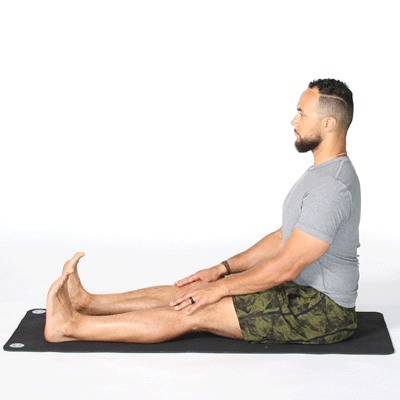
This article will help you understand the yogic definition of a long-lasting exercise routine. Yoga can be described as a spiritual practice, a breathing technique, or a discipline. Learn about a yogi's life-long practice to discover how this exercise can benefit you. Then find the best yogic meaning for you. Here are some examples yogic activities and their definitions.
Yoga can be a lifelong exercise program
Yoga has many health benefits, and it can help you stay healthy. Yoga is often thought of as a way to stretch and do aerobic exercise, but it can have many benefits for your health. Yoga can improve flexibility, strength and posture as well as your emotional state. It can also improve your mental health, promoting good health and wellbeing. If you are unsure of whether yoga is right for you, here are some of the benefits of this exercise:

It is a discipline
The goal of yoga is union between the mind and body. It combines breathing and meditation. Yoga has been practiced for thousands of years. Yoga is a practice that originated in India. While the asanas have been the most important aspect of yoga practice throughout history, meditation and breathing are equally important. Practicing yoga means remaining present. It is about achieving a balance between action and relaxation. It can be described as a meditation of the mind.
It is a spiritual exercise
Yoga derives its name from the Sanskrit word, yogic, which literally means "union". Hinduism holds that knowing oneself is the highest goal. The best way to avoid suffering and rebirth is to know yourself. This spiritual practice has many followers and is taught at many fitness clubs, YMCAs, as well as on Oprah. Yoga has many benefits, no matter if you are new to it or an old practitioner.
It is a breathing technique.
Pranayama in yoga is a technique that allows you to control your breathing and attain certain results. Different types of breathing exercises offer different benefits. For example, Ujjayi Pranayama, or warrior's breath, involves constricting the air passages in your throat to create an oceanic sound. This breathing technique requires that the practitioner contracts the abdominal muscles, and draws the navel in to increase exhalation.
It increases parasympathetic activities
Studies have shown that yoga is good for our parasympathetic system. Yoga increases parasympathetic activity, which activates our sympathetic nervous system when we are stressed. Yoga has been proven to increase heart rate variability. This is another indicator that yoga can help you cope with stress. It was found that yoga can increase parasympathetic activity. This in turn helps improve our overall health.

It reduces cortisol levels
Recent research suggests that yoga lowers cortisol levels. Cortisol can be a hormone released by the body after it has experienced a stressful event. Cortisol can increase blood sugar, lower immune system and alter metabolic processes. Increased cortisol can create a cycle that increases stress. Yoga is well-known to lower cortisol levels. It is important to benefit from yoga's positive effects if you are experiencing chronic stress or high levels of cortisol.
FAQ
Is yoga associated with side effects?
Like all forms of physical activity, yoga has some potential risks. The main risk is injury. It is important to know how to safely perform each pose.
If you are just beginning yoga, you might feel dizzy when standing on the head.
This is due to blood pooling within your brain. Don't worry, though; this sensation goes away quickly.
If you experience chest pains while doing downward-facing dogs, make sure you don't hold your breath. It will only make the situation worse and increase your heart rate.
What kind is yoga for beginners?
Yoga is great for all ages and fitness levels. It's an easy way to get fit and stay healthy. Yoga has been reported to improve mental and physical health. They also find that yoga makes them calmer and happier.
Yoga is more than exercise. It is a way to live that includes breathing exercises and stretching.
There are many types and styles of yoga. Some focus more on strength training than others. Others are more focused on relaxation.
The type of yoga that you want depends on your goals. Iyengar is great for flexibility. Or if you want to tone your muscles, go for Ashtanga yoga.
Can yoga help you stop smoking?
Yoga can help smokers quit smoking. It makes people feel healthier, both mentally and physically. It helps to lose weight from overeating. This could make it possible to stop smoking.
What should I do to begin practicing yoga?
For lying down, you'll need a mattress (some of them foldable), some loose clothes, and a towel or blanket.
Also, you may need props like straps to hold your blocks, straps to support your bolsters, blankets or towels in order for some poses.
You don't really need anything else. You must have a desire for positive change in your life and be willing to dedicate yourself to yoga.
What is the average time it takes to become a pro at yoga?
It depends on the style of yoga you are practicing. Some styles are slower than others. However, even if it's your first time, you can expect to get better over time.
The more you practice, the better you'll become. In just a few weeks, you'll start to notice the improvements.
Statistics
- A 2020 review of 27 studies (1,805 total participants) of yoga interventions in children or adolescents found reductions in anxiety or depression in 70 percent of the studies, with more promising results for anxiety. (nccih.nih.gov)
- In comparison, a 125-pound person is estimated to burn 135 calories in 30 minutes of walking (at a pace of 15-minute miles) and 210 calories bicycling at a moderate pace on a stationary bike. (everydayhealth.com)
- Lock in 25% off your Founding Member rate. (corepoweryoga.com)
- According to calorie estimates calculated at Harvard Medical School, the average 125-pound person burns about 120 calories in a half hour of hatha yoga, and a 185-pound person burns about 178 calories in that half hour. (everydayhealth.com)
- The people in the yoga group were 37 percent more likely to have quit smoking by the end of the 8-week program. (nccih.nih.gov)
External Links
How To
Can I do yoga during pregnancy?
Being pregnant can impact your ability to perform certain poses safely. Before you begin a new program for exercise, make sure to consult your doctor.
There are still many poses that you can do during pregnancy. These are some tips to help you get started:
-
Women who are pregnant shouldn't lift more than shoulder height. Instead, use lightweight resistance bands or dumbbells.
-
Avoid deep twists. This could put pressure on the belly.
-
Avoid backbends up until you have your baby. These can cause excessive strain on your lower back.
-
Before you deliver your baby, make sure to not sit on your stomach or cross-legged until the delivery.
-
Make sure you have your doctor cleared you to perform inverted poses (e.g., headstands or handstands).
-
Keep your practice time to no more than 30 minutes per day
You can do yoga during pregnancy as long as you're able to. Your doctor will let you know when you are ready for yoga.